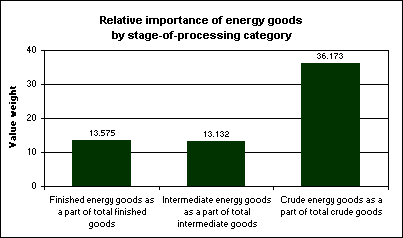An official website of the United States government
 United States Department of Labor
United States Department of Labor
The Bureau of Labor Statistics periodically conducts "reality checks" of the Producer Price Index (PPI) by comparing its components with alternative price measures. Most recently, BLS tested the elements of the energy commodities group, because of the large relative importance of energy indexes in the aggregate PPIs at all stages of processing. In all the tests, the energy PPIs closely tracked the alternative price measures.

[Chart data—TXT]
Month-to-month percent changes in six PPI energy product indexes—natural gas, crude petroleum, fuel oil #2, gasoline, residential electric power, and residential natural gas—were compared to changes in alternative data sources. In the first four cases, the alternative data were from the Energy Information Administration; in the last two, the alternatives were from the BLS Consumer Price Index (CPI).
For all six comparisons, there was a failure to reject the null hypothesis that the means of the percent changes are the same. In other words, the two series registered almost exactly the same average month-to-month change. Similarly, tests of the comparative variance of the series found that there was no significant difference in the variability of the changes around those means. Thus, the PPI energy indexes perform well in their measurement of price trends in the real economy.
This analysis is the product of the Producer Price Index program. Additional information can be found in "Comparing PPI energy indexes to alternative data sources,"Monthly Labor Review, December 1998.
Bureau of Labor Statistics, U.S. Department of Labor, The Economics Daily, Energy PPIs closely track oil, gas, and electricity prices at https://www.bls.gov/opub/ted/1999/mar/wk2/art05.htm (visited January 01, 2026).

